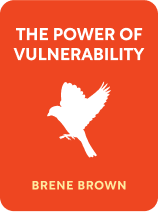

This article is an excerpt from the Shortform book guide to "The Power Of Vulnerability" by Brené Brown. Shortform has the world's best summaries and analyses of books you should be reading.
Like this article? Sign up for a free trial here .
What are the three most common myths about vulnerability? What is emotional armor and why is it a barrier to wholehearted living?
In Brené Brown’s TED Talk, The Power of Vulnerability, she discusses the three myths around vulnerability: that vulnerability is weakness, that shame can be handled in private, and that vulnerability is not necessary to build trust. In order to avoid being vulnerable, many will cloak themselves in emotional armor, which prevents them from living wholeheartedly.
Continue reading for more information about the vulnerability myths and emotional armor.
Myths About Vulnerability
There are many myths about vulnerability that lead people to put on “emotional armor” that prevents them from living authentically. There are three primary myths that distort people’s perception of vulnerability:
Myth #1: “Vulnerability Is a Weakness, and I Can’t Show Weakness Because I’m a ________”
Because vulnerability requires sharing shame and emotion, many associate it with weakness. As a result, many believe that because they’re a certain gender or work a certain job, they can’t show vulnerability:
- From a gender perspective, this is usually said by men because they believe that masculinity doesn’t align with vulnerability.
- From a career perspective, this is usually said by people in high-stress or high-power positions such as lawyers, executives, or engineers.
Despite this popular belief, vulnerability is actually a sign of strength. It requires more courage to share something intimate with someone not knowing how they’ll perceive you than staying silent and isolated because you’re afraid of what they may think of you.
Myth #2: “I Don’t Need Vulnerability Because I Can Handle My Shame in Private”
Shame uses isolation to develop, making it nearly impossible to handle shame without vulnerability. People often use this excuse because they’re afraid of rejection and believe this is the “safer” option. However, isolation is almost always more suffocating than sharing your emotional state with people that you trust.
For example, if you silently believe that you’re less intelligent than everyone around you, that will quickly put you into an unhealthy emotional place. However, if you share your insecurity with a close friend, they may find that your insecurity about your intelligence is all in your head.
Myth #3: “I Can Build Trust Without Vulnerability”
Trust requires vulnerability between two parties. It is nearly impossible to trust another person if you have no concept of their motives, personality, or feelings. To develop trust, you have to be willing to be vulnerable. Sharing small moments of love, affection, or empathy will help develop a stronger bond with the people around you over time.
Note: Trust takes a long time to build, but only an instant to destroy. In terms of vulnerability, there are two primary causes of the destruction of trust:
- Betrayal, or using someone’s vulnerability against them.
- Disengagement, or no longer showing interest in someone’s vulnerability.
Emotional Armor
With common misconceptions about vulnerability in mind, we often rely on “emotional armor,” or mental states that prevent vulnerability. From childhood, most of us are taught that these behaviors will “protect” us from being emotionally damaged by other people. However, they only serve as barriers to wholehearted living. There are three major pieces of “emotional armor”: perfectionism, numbing through addiction, and foreboding joy

———End of Preview———
Like what you just read? Read the rest of the world's best book summary and analysis of Brené Brown's "The Power Of Vulnerability" at Shortform .
Here's what you'll find in our full The Power Of Vulnerability summary :
- The 10 practices that you can use to embrace vulnerability and start living a wholehearted life
- Why thinking that you're never "enough" is dangerous
- The most common sources of shame and how to overcome them






